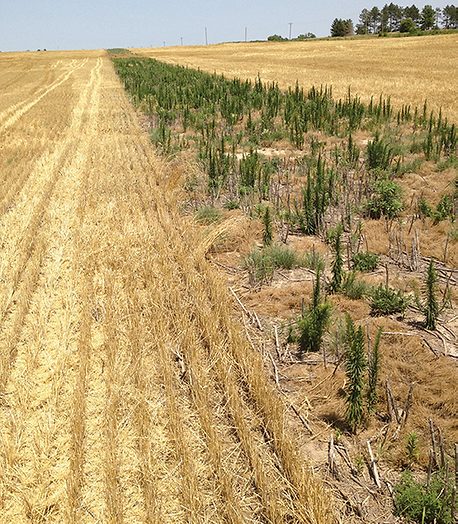Weed control has focused on resistance management, with a greater reliance on residual herbicide programs, use of multiple sites of action at full rates and overlapping residual programs. As use of cover crops have increased in recent years, managing weeds through a longer residual herbicide program has become more complicated.
Cover crops have a wide range of values including soil erosion protection, increases soil organic matter, beneficial fungi/nematodes, habitat for beneficial insects, help nutrient retention, possible nitrogen source, may increase infiltration capacity, used as a feed source and can assist in weed suppression. Trends of adopting cover crops have seen the use of shorter-season cash crops to allow more time for diverse cover crops to grow. Many producers are finding new ways to get cover crops established quicker, such as following combines with seed drills or spreading cover crop seed from a combine header. Most producers are growing cover crops to help give another option for grazing or for forage production. With all this comes the question of herbicides effects on cover crop establishment and rotation restrictions.
Herbicides can be one of many possible reasons for decreased cover crop stands or decreased cover crop production. Moisture, planting time, previous crop residue, saline/sodic soils and planting uses such as seed-to-soil contact and seed depth can come into play and may be a larger issue than herbicides alone on cover crop establishment.
Herbicides of Least Concern in Corn Production
Herbicides of least concern, (if applied on cash crop according to label) for residual issues on cover crops planted after corn silage would include chemicals like glyphosate, glufosinate, paraquat, 2,4D, dicamba, clopyralid, bromoxynil, bentazon, and diflufenzopyr.
Research Discussion and Results
Studies have shown that soil pH over 7.0 and lack of microbial breakdown are the leading causes of herbicide carryover to rotational crops. Microbial breakdown of herbicides are increased in an environment favorable to microbial growth, which includes generally warm temperatures and sufficient soil moisture. In a study conducted to SDSU, we found that there were a wide range of variables that affect cover crop establishment, herbicide only being one of them. Cover crop stand counts were observed to be variable across locations and treatments due to soil conditions and weather differences at each location. If the goal of a producer is to produce biomass for weed suppression after corn silage, our research shows cereal rye would be the best option followed by radish or Winfred rape, depending upon cover crop planting time and weather conditions during and after planting. The same study showed rye planted after silage cutting had favorable stands after the majority of all corn residual herbicides sprayed pre or early post in corn.





Post a comment
Report Abusive Comment